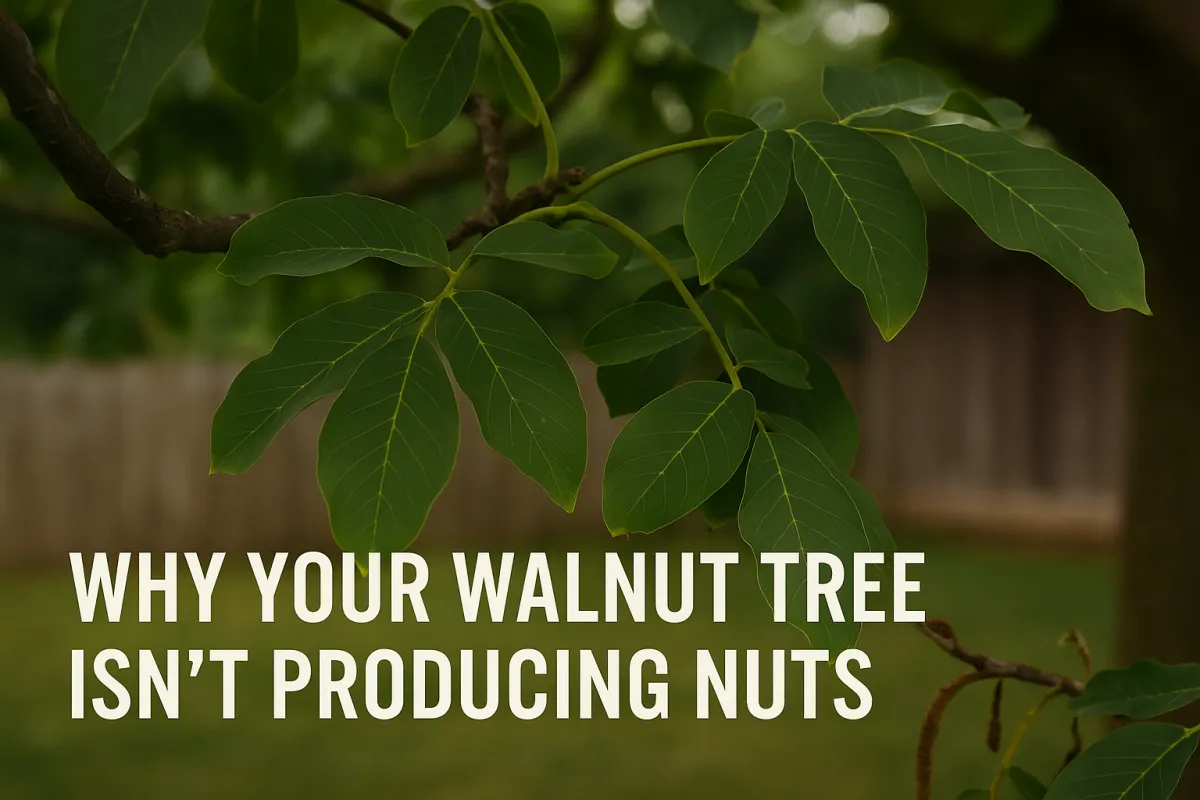
Why Your Walnut Tree Isn’t Producing Nuts (and How to Fix It)
Why Your Walnut Tree Isn’t Producing Nuts (and How to Fix It)
The Year the Tree Stayed Empty
I still remember the first season I waited on our walnut tree to produce. The tree had shot up tall, full of deep green leaves, and I was already imagining baskets of nuts. But fall came and went — not a single nut hit the ground.
If you’ve been waiting on a stubborn walnut tree, you know the feeling. It can feel like the tree is mocking you. The good news? Most of the reasons for poor or missing nut production are simple to diagnose and fix.
Let’s walk through them, step by step, so you know exactly what your tree needs this season.
Walnut Trees Take Their Time
Before you rip the tree out in frustration, check its age. Walnut trees are not in a hurry.
Black walnuts often need 7–15 years to start producing a decent crop.
English/Persian walnuts usually start earlier, around 4–7 years.
Look for catkins (long drooping pollen structures) and tiny green flowers as signs that your tree is entering maturity. No catkins yet? It’s likely still too young.
Grandma’s Tip: “Patience grows walnuts as much as rain does — don’t expect a baby tree to feed you.”
Pollination Problems with Lone Trees
Walnuts are technically self-fertile, but that doesn’t mean they thrive alone. Male and female flowers often bloom at slightly different times on the same tree, which can result in poor pollination.
How to Fix It
Plant a partner tree. Choose a walnut variety that blooms at the same time as yours for cross-pollination.
Graft a branch. A single branch from another tree can be enough to provide pollen.
Talk to neighbors. If someone nearby already has a walnut, your tree may benefit naturally in a year or two.
Late Frost Damage
Even mature trees can lose an entire crop if spring temperatures swing too low after they leaf out. Late frosts kill catkins and flowers before they can set nuts.
How to Spot It
Catkins look blackened or shriveled.
No nut set at all, despite a healthy-looking tree.
How to Reduce Damage
Plant slightly later-blooming varieties if you’re replanting.
Keep soil moisture even with a thick mulch layer — it can delay early blooming and help protect from frost damage.
Nutrient Imbalances & Overfertilization
Walnut trees love nitrogen — but too much pushes them into leafy, vegetative growth at the expense of flowering.
Step-by-Step Fix
Run a soil test. Check nitrogen, potassium, and phosphorus levels.
Reduce nitrogen-heavy fertilizers. Stop broadcasting lawn fertilizer near the tree.
Add phosphorus and potassium if they’re low — these support flowering and nut production.
Lush, dark-green growth with no nuts is almost always a sign you’re overfeeding.
Drought Stress or Compacted Soil
Healthy nut production requires deep, unstressed roots. If your tree struggled through a dry summer or is planted in compacted clay soil, nut production may drop to zero.
Step-by-Step Fix
Water deeply, not often. Aim for slow, deep soaks every 10–14 days during dry spells.
Mulch wide. Spread 3–4 inches of wood chips or leaves out to the drip line to hold moisture.
Relieve compaction. Use a broadfork or aerator to loosen soil around the tree without damaging roots.
Trees that get water stress during nut set will often abort nuts or never form them at all.
Pro Tips & Mistakes to Avoid
Pro Tips:
Don’t prune too heavily in spring — you can accidentally remove catkins and flowers.
Don’t panic after one bad year. Look for patterns across two or three seasons before taking drastic measures.
Faith Touch
There’s a reason Ecclesiastes reminds us there’s a season for everything:
“To everything there is a season,
A time for every purpose under heaven.” — Ecclesiastes 3:1 (NKJV)
Sometimes the lesson of a walnut tree is simply to keep tending, keep waiting, and trust that the harvest will come in its time.
Your Next Step
Don’t guess — diagnose. Start by figuring out if your tree is mature enough to bear, then move step by step through pollination, frost, nutrients, and water.
I put together a Walnut Tree Troubleshooting Checklist you can print and take outside with you. Grab it, follow the steps, and you’ll know exactly what’s holding your tree back — and what to do about it.


Facebook
Instagram
X
Youtube